COFFEE – CLASSIFICATION, CUPTASTING, ROASTING
INDIA – Discover the specialty monsoned coffees
(Fifth part of sixth)
by Gian Luigi Nora
38TH part* – The 39TH part on Friday
To read the pages about India you have to click the link below.
Warning: no virus problem, if asked reply yes.
The .pdf files can stored, copied or printed
Mais Notícias
COFFEE – CLASSIFICATION, CUPTASTING, ROASTING
By Gian Luigi Nora
The Brazilian crop straddles two years starts officially on the 1st if July, even if the exports of the new crop can take place before or after such date, Therefore a crop may be indicated as 2007/2008
Tenth part* – The 11 th part on Tuesday
CLASSIFICATION BY CROP
Crop year: the Brazilian crop straddles two years and starts officially on the
1st if July, even if the exports of the new crop can take place before or after such date, therefore a crop may be indicated as 2007/2008, for example.
The indication of the year of the Crop is quite important, especially in the
period between the two crops, and it is important to indicate it, as the old and new crop-coffee have a different commercial value.
Other indications regarding the crop are:
CURRENT CROP
NEW CROP
PAST CROP
OLD CROP
SANTOS ARC
We could not end the important chapter on Brazilian coffee without mentioning the special types exported by our associate Eurobrasil Ltda. in Santos that are processed and controlled before the shipment by our Classificadores in Brazil and are also subject to a further meticulous control at the arrival in the laboratories of the Aziende Riunite Caffè in Milan, for which the writer is in charge.
As many people know from their experience the range of Brazilian coffee is extremely large as well as the possibilities to mix coffee from various areas and to obtain the most different types. Therefore we will only describe some Santos varieties processed for the Italian market and that have been largely appreciated by our customers:
ARC SELECTO PLUS
The descascado (cherry-pulped) coffee receives a particular treatment since
its harvesting. Apposite machines installed in the plantation separate with a strong jet of water the mature and the green cherries and at the same time peel only the mature ones from which the coffee beans, still covered with parchment and mucilage, will be obtained. Such beans will be then dried under the sun with no further washes of fermentation periods in water, as happens for washed coffee.
With this special state-of-art processing, only performed in some fine coffee
production areas in Brazil, the result is a highly selected product, completely lacking of green beans or other defects, that will allow a practically perfect roasting. The cup taste of this coffee will have two characteristics: the sweetness of the unwashed Santos and the body and aroma of washed
coffee. It is a kind of coffee that forms a real blend by itself.
ARC 5 ESTRELAS
A so-called plantation coffee, as it is produced only by a planter or that comes from a very delimited area located in the tableland of Mount Carmelo (850-1050 metres) and in the districts of Patrocino and Araxà. This coffee has the following characteristics:
NY 2 type – Practically no great defects such as black, sour, over-fermented, unripe beans etc., fine roasting due to its faultlessness and to the uniform drying of the parcels.
Cup taste – Strictly soft (very sweet taste) with good body and medium-low acidity.
ARC DELIZIA
Coffee produced by one single planter or coming from very limited areas in
the mountainous region of the Franca, Pedregulhos, Batatais and Altinòpolis
districts (950-1050 metres).
Type NY 2 threfore free from any important defect. Fine roasting, Strictly
soft taste, full body and medium acidity. Perfect to give robustness to blends without exceeding in acidity.
ARC MOGIANA
Mountain coffee (from 1050 to 1250 metres) produced by one single planter or
coming from plantations in the districts of Guaxupé, Sào Sebastiào do Paraìso, Pocos de Caldas and Ouro Fino. NY 2 type practically with no defects, coffee with a strong personality, very full body and with good aromatic acidity, particularly suggested for blends that need a strong basis.
ARC BOURBON AMARELO
Recently we have found that some small producers in the regions of the
Mogiana/Sul de Minas have started producing again a very precious coffee variety, the Bourbon Amarelo, that has been almost extinct for some time because of the low production of its plant, compared to the new varieties such as Mundo Novo, Catui and many or hybrids.
This variety differs from the others not only for the bright yellow of its cherries
during maturation, but especially for its extraordinary organoleptic characteristics.
Surely the Bourbon Amarelo plants are less charged, and therefore they manage to transfer uncommon body texture, taste and sweetness to their fruits.
Tenth part* – The 11th part on Tuesday
Mais Notícias
Deixe um comentário
COFFEE – CLASSIFICATION, CUPTASTING, ROASTING
By
Gian Luigi Nora
Third
part* – The fourth part on Friday

Flat
Bean
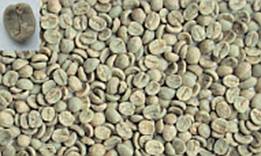
Bourbon
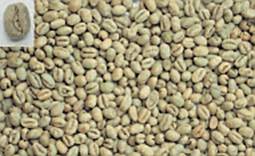
Peaberry
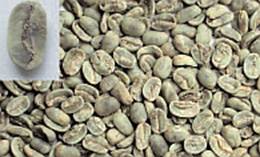
Maragogype
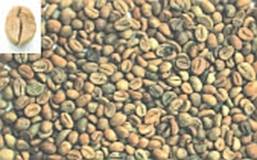
Brazilian
Robusta
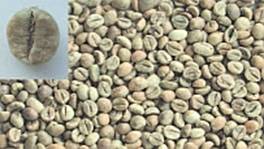
African
Robusta
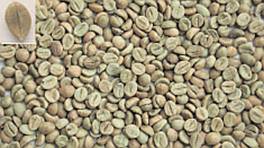
Indian
Robusta
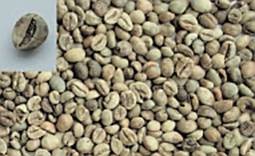
Asian Robusta
THE
SIZE OF THE BEAN
This is measured by means of
special screening devices (sieves made out of perforated tin sheets whose holes
are measured in 64ths of an inch). These exactly match the screens used in
the machines during the product curing.
A size -18 (screen) lot shall then
correspond to a coffee whose beans will be retained by a screen with round
holes having a diameter of 18/64 of an inch.
Generally, the size of the bean for
Asian coffees (in
particularly) is measured in
millimetres and not in 1/64ths of an inch as in other producing
countries. In
still measured resorting to the old bean count method, that is, the
number of beans which make up one hundred grams. The maximum amount of beans
making up
grams
labels: extra large bean, large bean, etc.
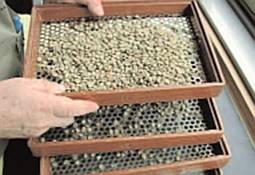
Samples
screening
CLASSIFICATION BY
TYPE
The coffee TYPE is determined by
the number of intrinsic defects, foreign matters and miscellaneous impurities which
are present in a lot, such as broken, black, damaged, unripe, sour, fermented,
beans; residues from the product agricultural and industrial processing.
According to the percentage of defects and foreign matter sorted in a
gram
define a different commercial value.
There are various methods of
classification, and almost every producing country uses its own system. However, the
most complete and rational system, which is accepted by the Brazilian official
category bodies, is that set for Brazilian coffees by the New York Coffee and Sugar
Exchange, the most important Coffee Exchange in the
world.
Different defects have different
equivalents according to the influence they will exert on the roasting process, the
appearance and, above all, the taste of coffee. For example, five broken beans, which
may affect the appearance and yield of the Roasting process, will correspond
to only one defect, while the presence of only one black bean, which negatively
impacts the taste in the cup no doubt, will also correspond to one defect. Type
classification thus entails the following
equivalents:
TABLE
OF DEFECT EQUIVALENCES
1 black bean
=
1 defect
2 sour beans
=
1 defect
2 beans in parchment
=
1 defect
3 shells
=
1 defect
5 quakers
=
1 defect
5 unripe
beans
= 1 defect
5 broken beans
=
1 defect
1 cherry pod
=
1 defect
5 weevilled beans (more than one
hole) = 1 defect
10 weevilled beans (only one hole)
= 1
defect
5 ill-shaped or spongy beans
=
1 defect
1 large husk
=
1 defect
3 small
husks
= 1 defect
1 large stone
=
5 defects
1 medium
stone
= 2 defects
1 small stone
=
1 defect
1 large
twig
= 5 defects
1 medium
twig
= 2 defects
1 small
twig
= 1 defects
Please note: In some African and
Asian countries brown beans are also considered
a
defect; 4 of them for one defect.
GRADATION OF TYPES
Type
2
4
Defects
Type
2/3
8
Defects
Type
3
12
Defects
Type
3/4
19
Defects
Type
4
26
Defects
Type
4/5
36
Defects
Type
5
46
Defects
Type
5/6
66
Defects
Type
6
86
Defects
Type
6/7
123
Defects
Type
7
160
Defects
Type
7/8 260
Defects
Type
8
360
Defects
Third
part* – The Fourth on Friday